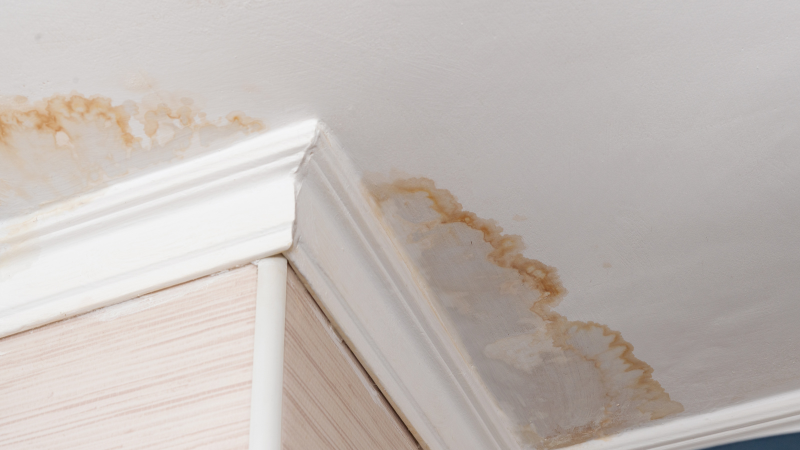Just how do you actually feel about Preventing Water Damage in the Bathroom?

The restroom is very at risk for wet buildup and potential water damage as a result of the constant use water in it. This post supplies simple evaluation methods to assist identifying water damages hazards.
The frequent use of water in the restroom makes it extremely susceptible for damp accumulation and potential water damage. By examining it on a regular basis, you can lower water relevant problems.
The following set of inspections is easy to execute and also need to be done once in every 3 months in order to maintain your bathroom in good shape and to prevent potential water damages caused by the bath tub, the shower, pipeline joints as well as plumbing, sinks, cupboards, and the toilet
Do not neglect performing these inspections and be thorough while executing them. Remember that these straightforward examinations can conserve you a great deal of money by supplying early indications for water damage
Sinks and also Cabinets
Sinks and also cupboards are subjected to moisture and moisture day-to-day as well as are frequently neglected. Inspect consistently under the sink and also on the countertop above it. Fix any type of drip in the trap as it may recommend drainpipe problems. Look around the sink, slow-moving draining pipelines may show a blocked drain. Change sink seals if they are broken or loosened.
Bath tub as well as Shower
The shower and bath tub need special focus as well as maintenance. Examine the ceramic tiles and also change if broken. Make sure that there is no missing out on grout in between the ceramic tiles. Examine and also change broken caulking at joints where the wall surfaces satisfy the flooring or the bathtub. Clogged drains pipes as well as pipelines issues will protect against the tub from drying and also may show severe problems underneath the bathtub. Speak with a professional promptly to prevent architectural damage. Take notice of discolorations or soft locations around the bathtub wall surfaces as they may suggest an internal leakage.
Plumbing
Signs for water damage are hard to find since a lot of pipes are set up inside the walls.
Pay special focus to flooring and also walls dampness and spots as they may indicate an undetectable plumbing problem. Inspect dampness levels in adjacent rooms also.
The Commode
The toilet is a prone water junction. Inspect the water lines and also search for leaks around the bathroom seat, in the tube, and under the water storage tank. If you identify any type of indicators of moisture on the floor around the commode, check for leaks in the toilet edge and also tank seals.
Be aware that hanging bathroom dish antiperspirants enhances the possibilities for obstructions.
Water Damage Signs In The Bathroom To Avoid Cleanup
Musty smell
This is one of the easiest signs to catch because musty smells are so odorous. The damp, earthy, moldy smell should be a big red flag. The smell will develop when moisture gets trapped in surfaces, and begins to facilitate mold growth. Leaking pipes under cabinets, inside walls, and behind shower fixtures will cause moisture to stay trapped and not dry, which will lead to mold growth and spread. As soon as you notice any musty smells in your bathroom, have it checked for hidden water damage and cleanup signs.
Visible mold
If the smell isn’t there to give it away, sometimes you will actually see mold growth. Finding mold in your bathroom is a serious problem, because mold is very harmful to your health. By the time mold growth is visible, it also means that water damage has already occurred and been present for some time. The only way the mold problem can be resolved is to find the source of the moisture and get it stopped. To safely and adequately remove mold, you need to have professionals handle the remediation. Do not waste any time in getting mold problems addressed, fixed, and sanitized so that you can protect you and your family from the many respiratory symptoms caused by mold exposure.
Damaged floors
Bathroom floors should be able to withstand some exposure to water while still remaining in good condition. However, when excess exposure or water leaks occur, they will begin to damage even the most water-resistant flooring. If you notice any cracking, bubbling, staining, or warping on your bathroom floors, there is probably a water leak somewhere causing the distortion. If you notice areas of the floor have become softer, or even have a spongy feeling, there is probably damage to the subfloor. Subflooring is typically made up of plywood. When plywood is exposed to water or moisture, it will absorb it. Once it has become saturated, the weight of the excess water will cause the wood to swell and soften. Check the floors in your bathroom frequently to catch any of these sings before they lead to damaged subflooring.
Changes on walls
When water leaks behind walls, it will cause changes in the drywall. Peeling plaster, blistering paint, and soggy wallpaper are all good indicators that excess water is building up behind the wall. Water leaking behind drywall will cause it to swell and be soft to the tough. If you start to notice gaps along the trim of your walls, or where tile meets the wall, it could also be a strong indicator that there is a leak behind the wall. Any changes, distortion, or damage on the walls should be evaluated as soon as you notice it to prevent further water damage and cleanup.

I was shown that write-up about Preventing Water Damage in the Bathroom from an associate on a different website. Please set aside a second to promote this content if you enjoyed reading it. We truly appreciate reading our article about Looking for Signs of Water Damage in the Bathroom.
Book A Free Estimate
Comments on “How to Repair and also Stop Bathroom Water Damage”